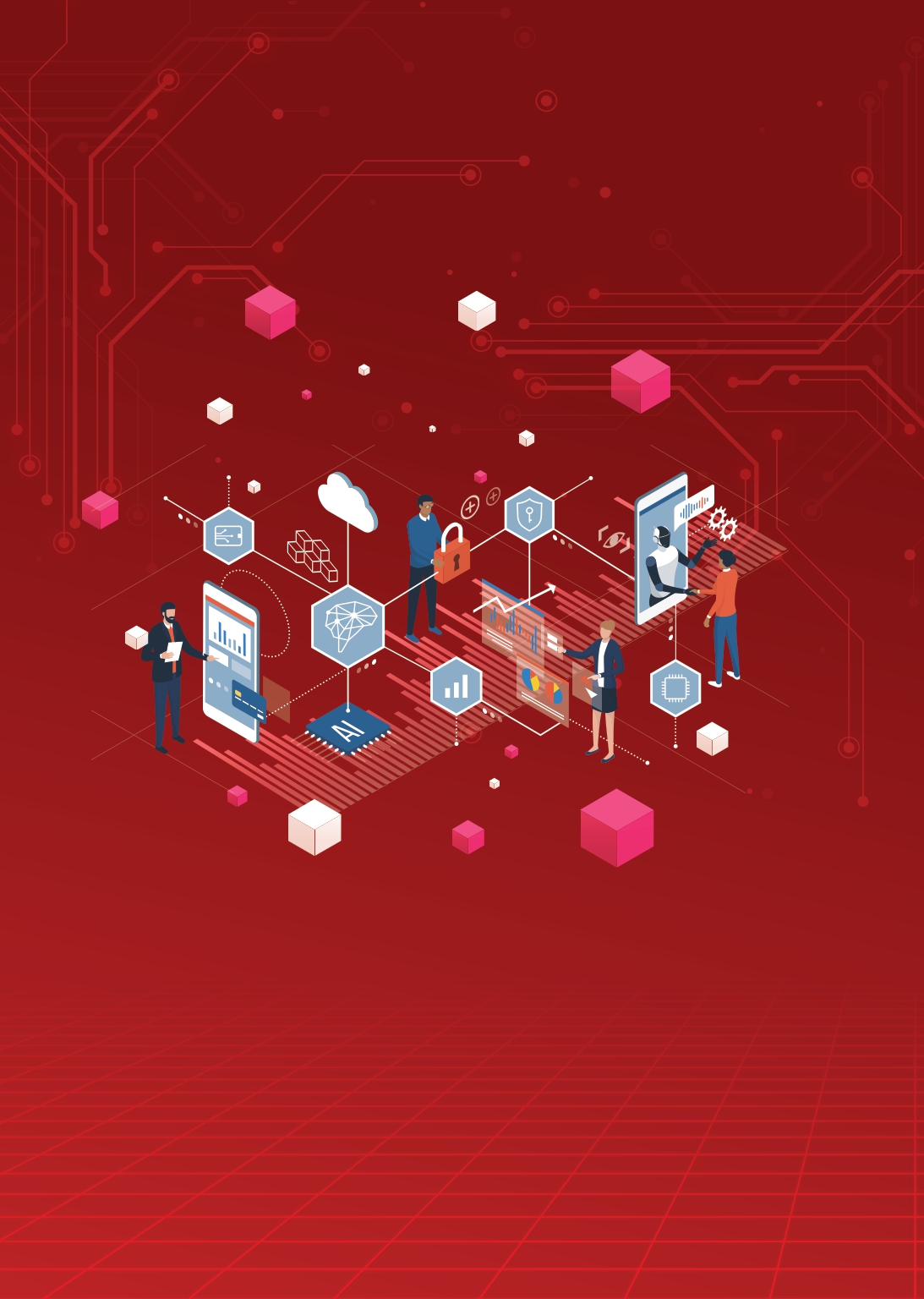Blockchain Ecosystem to Raise Thailand’s Telecommunication Sector to a Smart Society According to Thailand 4.0 Policy
Keywords:
Blockchain, Blockchain ecosystem, Telecommunication industryAbstract
Blockchain is a technology that is widely mentioned about, particularly for building trust and authentication in the digital world. A crucial factor for the success of applying blockchain in an industry consisting of different organizations is to develop a blockchain ecosystem that can accommodate telecommunication sector. The article’s goal was to design a blockchain ecosystem for Thailand’s telecommunication industry. In this study, focus group discussions were used to collect information from stakeholders. This information was employed to design a blockchain ecosystem for the telecommunication industry. The research result demonstrated a working environment under the blockchain ecosystem. In addition, five information system prototypes were developed including: an information system for the office of NBTC’s news and message notification; a system for gathering and verifying call data and service fees; a system for collecting and administering data on the verification of registration label on radiotelephony; a system for online checking of promotions and usage for general people; and a system for switching provider and keeping the same phone number. The system efficiency assessment indicated that the functional test and security test received highest scores with mean scores of 4.76 and 4.65 respectively. The functional requirement test and usability test received high scores with mean scores of 4.35 and 4.24 respectively.
References
สำนักงานพัฒนารัฐบาลดิจิทัล. (2564). BLOCKCHAIN for GOVERNMENT SERVICES การใช้เทคโนโลยีบล็อกเชนสำหรับภาครัฐ เวอร์ชัน 2.0. สำนักงานพัฒนารัฐบาลดิจิทัล (องค์การมหาชน).
Babu, A., Davis, B., Bruwer, T., Sallaba, M., & Gramatke, M. R. (2016). How Blockchain can Impact the Telecommunications Industry. Blockchain@Telco. https://www2.deloitte. com/content/dam/Deloitte/za/Documents/technology-media-telecommunications/za_ TMT_Blockchain_TelCo.pdf
Bao, J., He, D., Luo, M., & Choo, K. -K. R. (2021). A Survey of Blockchain Applications in the Energy Sector. IEEE System Journal, 15(3). 3370-3381. https://doi.org/10.1109/ JSYST.2020.2998791.
Chaum, D. (1982). Computer Systems Established, Maintained and Trusted by Mutually Suspicious Groups [Doctoral dissertation]. University of California. https://nakamotoinstitute.org/static/docs/computer-systems-by-mutually-suspicious-groups.pdf
Chen, W., Xu, Z., Shi, S., Zhao, Y., & Zhao, J. (2018, December 10-12). A Survey of Blockchain Applications in Different Domains. In International Conference on Blockchain Technology and Applications. ICBTA 2018 (pp. 17-21). Xi’an: China. https://doi.org/10.1145 /3301403.3301407
Estonia, State Electoral Office of. (2017). General Framework of Electronic Voting and Implementation thereof at National Elections in Estonia. Tallinn.
Guo, H., & Yu, X. (2022). A survey on blockchain technology and its security. Blockchain: Research and Applications, 3(2). 1-15. https://doi.org/10.1016/j.bcra.2022.100067
Haber, S., & Stornetta, W. S. (1991). How to time-stamp a digital document. Journal of Cryptology, 3(3). 99-111. https://doi.org/10.1007/BF00196791
Huang, G., & Foysal, A. (2021). Blockchain in Healthcare. Technology and Investment, 12(3), 168-181. https://doi.org/10.4236/ti.2021.123010
Joshi, A. P., Han, M., & Wang, Y. (2018). A Survey on Security and Privacy Issues of Blockchain Technology. Mathematical Foundations of Computing, 1(2), 121-147. https://doi.org/ 10.1109/ICSSE.2019.8823094
Keith, B. (2016). The 10 Countries Best Prepared for the New Digital Economy. World Economic Forum. https://www.weforum.org/agenda/2016/07/countries-best-prepared-for-the-new-digital-economy/
Liu, L., Zhang, W., & Han, C. (2021). A survey for the application of blockchain technology in the media. Peer-to-Peer Networking and Applications, 14(5), 3143-3165. https://doi.org/ 10.1007/s12083-021-01168-5
Mohammad, A., Vargas, S., & Čermák, P. (2022). Using Blockchain for Data Collection in the Automotive Industry Sector: A Literature Review. Journal of Cybersecurity and Privacy, 2(2), 257-275. https://doi.org/10.3390/jcp2020014
Nakamoto, S. (2009). Bitcoin: A Peer-to-Peer Electronic Cash System. Bitcoin.org. http://bitcoin.org/bitcoin.pdf
Qasse, I. A., Talib, M. A., & Nasir, Q. (2019). Inter Blockchain Communication: A Survey. In ArabWIC2019: Proceedings of the ArabWIC 16th Annual International Conference Research Track (p. 1-6). https://doi.org/10.1145/3333165.3333167
Ridgewell, P. (2019, May). Blockchain Where’s the Value for Telecoms? TMForum. Accenture. https://www.accenture.com/_acnmedia/pdf-101/accenture-blockchain-wheres-the-value-for-telecoms.pdf
Royce, W. W. (1970, August 25–28). Managing the Development of Large Software System: Concepts and Techniques. In Technical Papers of Western Electronic Show and Convention (WesCon). Los Angeles: USA.
Sharma, R. (2021). Bit Gold. Investopedia. https://www.investopedia.com/terms/b/bit-gold.asp
Shetty, A., Shetty, A. D., Pai, R. Y., Rao, R. R., Bhandary, R., Shetty, J., Nayak, S., Dinesh, T. K., & Dsouza, K. J. (2022). blockchain Application in Insurance Service: A Systematic Review of the Evidence. SAGE Open, 12(1), 1-15. https://doi.org/10.1177/21582440221079877
Taylor, J., P., Dargahi, T., Dehghantanha, A., Parizi, M., R., & Choo, R., K -K. (2020). A systematic literature review of blockchain cyber security. Digital Communications and Networks, 6(2). 147-156. https://doi.org/10.1016/j.dcan.2019.01.005
World Economic Forum. (2015, September). Deep Shift Technology Tipping Points and Society Impact. Global Agenda Council on the Future of Software & Society. https://www3.weforum.org/docs/WEF_GAC15_Technological_Tipping_Points_report_2015.pdf
Zheng, Z., Xie, S., Dai, H. -N., Chen, X., & Wang, H. (2018). Blockchain challenges and opportunities: a survey. International Journal Web and Grid Service, 14(4). 352–375. https://doi.org/10.1504/IJWGS.2018.095647

Downloads
Published
How to Cite
Issue
Section
License
Copyright (c) 2022 NBTC Journal

This work is licensed under a Creative Commons Attribution-NonCommercial-NoDerivatives 4.0 International License.
The Office of the NBTC holds the copyright of articles appearing in the journal. The Office of the NBTC allows the public or individuals to distribute, copy, or republish the work under a Creative Commons license (CC), with attribution (BY), No Derivatives (ND) and NonCommercial (NC); unless written permission is received from the Office of the NBTC.
Text, tables, and figures that appear in articles accepted for publication in this journal are personal opinion and responsibility of the author, and not binding on the NBTC and the Office of the NBTC. In case of errors, each author is solely responsible for their own article, and not concerning the NBTC and the NBTC Office in any way.


